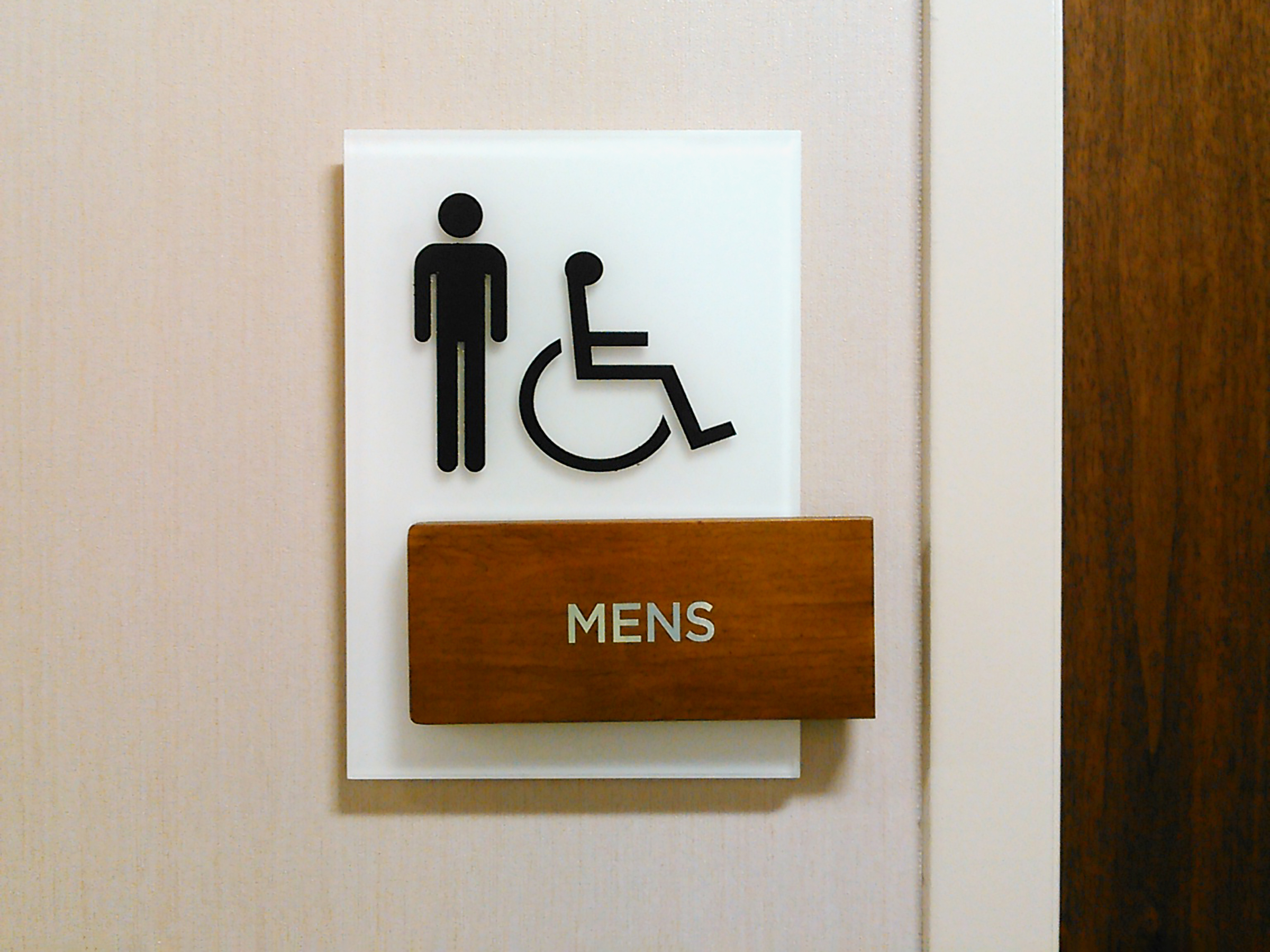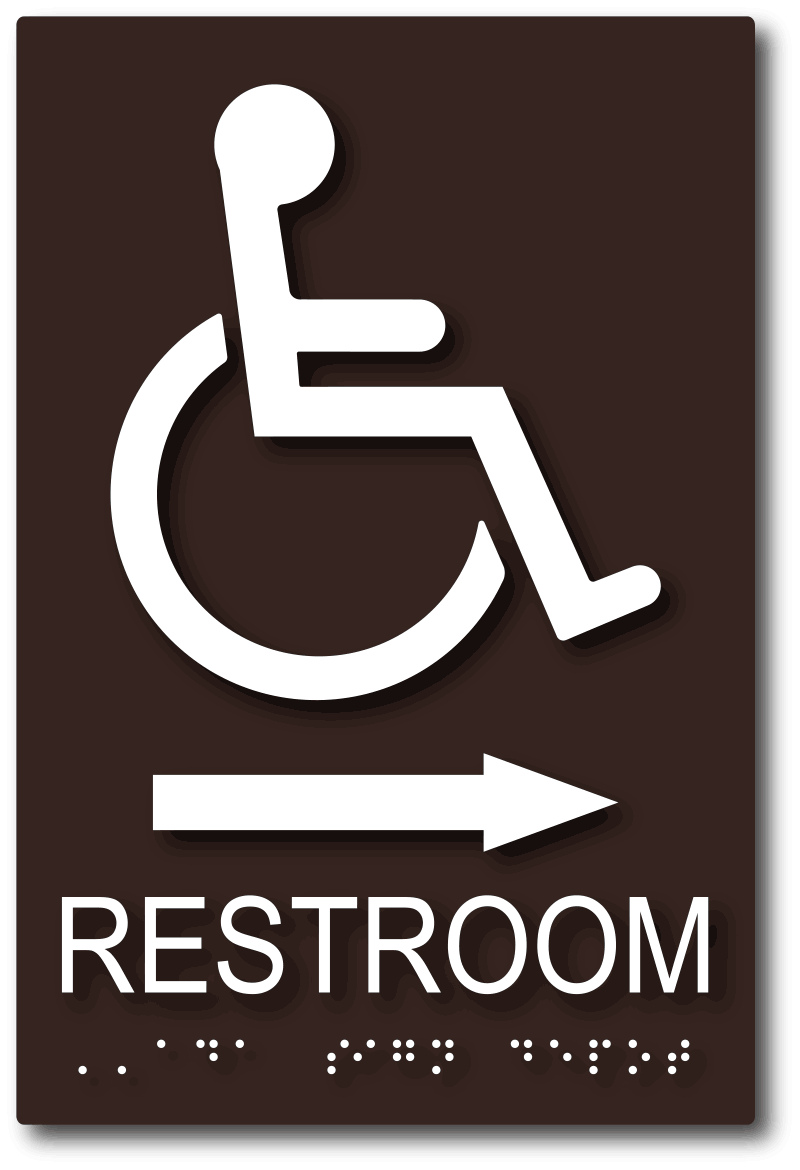Comprehending the Laws Behind ADA Signs
Wiki Article
ADA Signs: Guaranteeing Accessibility and Conformity in Public Spaces
ADA signage plays a vital duty in guaranteeing ease of access and compliance within public areas, substantially contributing to an inclusive environment for individuals with impairments. As we check out the nuances of ADA signage, from tactile attributes to make details, it's crucial to consider how these elements integrate to support the rights of all users.Importance of ADA Signage
In modern-day culture, the value of ADA signage expands past simple conformity with legal mandates to embody a commitment to inclusivity and accessibility for all individuals. These indicators are crucial in developing atmospheres where people with handicaps can browse public areas with the same ease and freedom as those without specials needs. By offering clear and standard info, ADA signs guarantees that everyone can access centers, services, and information without obstacles.The significance of ADA signage hinges on its capability to improve the high quality of life for individuals with specials needs by promoting equivalent gain access to. It eliminates the barriers that may otherwise prevent their capability to participate totally in community life. In addition, these indications serve as noticeable indicators of a company's dedication to variety and equality, mirroring wider social values that promote the rights and self-respect of all people.
Moreover, ADA signs plays a vital function in public safety. By directing people to exits, bathrooms, and various other vital centers, it ensures that all people, no matter of physical ability, can leave securely throughout emergencies. In summary, ADA signs is not simply a regulatory demand yet an effective tool for promoting a comprehensive and fair society.
Crucial Element of Compliance

Placement is vital; signs should be installed in locations that are obtainable and easily noticeable. Commonly, signage should be mounted in between 48 and 60 inches from the ground to make certain access for both standing and mobility device users. Tactile components, such as Braille, are crucial for people with visual impairments, offering vital info in a non-visual format.
High-contrast shades in between the text and history are needed to improve readability for individuals with low vision. The ADA mandates details comparison ratios to ensure quality. Furthermore, personality dimension is a crucial consideration, with minimum elevation requirements dictated by the checking out distance to ensure readability from numerous angles.
Style Considerations for Access
Designing obtainable signage needs a careful method to guarantee it satisfies the demands of all customers, particularly those with specials needs. The dimension of the message is just as important, with ADA standards recommending a minimum height based on checking out distance to guarantee readability.Contrasting shades in between text and history published here are essential for visibility, specifically for people with aesthetic disabilities. In addition, tactile components, such as Braille and elevated personalities, are crucial for individuals who are blind or have reduced vision.
In addition, the positioning of signage plays a significant role in accessibility. Indicators ought to be mounted in areas that are unblocked and quickly reachable. Guaranteeing that signage is mounted at ideal elevations and angles allows all users, consisting of those utilizing wheelchairs, to communicate with them efficiently.
Usual Errors to Avoid

An additional visit here prevalent mistake is the wrong placement of signs. ADA guidelines define precise elevation and place requirements to ensure that indications are easily noticeable and obtainable by all individuals, consisting of those using mobility devices. Neglecting these guidelines not just hampers access however additionally runs the risk of non-compliance with lawful standards.
Furthermore, not enough contrast in between message and background is a regular oversight. Ample contrast hop over to here is necessary for readability, particularly for individuals with reduced vision. Designers occasionally pick colors that are visually attractive yet lack the required contrast, providing the text tough to recognize.
Last but not least, some designers fail to integrate responsive components, such as Braille, which are crucial for individuals who are blind. Leaving out these attributes not just causes non-compliance with ADA regulations but also restricts gain access to for a sector of the populace that counts on responsive information.
Future Trends in Signage
Developments in modern technology and raising recognition of inclusivity are forming the future fads in signs layout. As culture comes to be more conscious of diverse needs, the integration of smart technologies into signs is obtaining grip. Digital signs, for example, is advancing to consist of real-time updates and interactive attributes, which can be critical in giving dynamic details in public areas. These indications typically incorporate touch displays or gesture-based controls, allowing individuals to browse material tailored to their certain demands.One more arising fad is the use of augmented fact (AR) to enhance customer experience. AR-enabled signage can overlay digital details onto the physical atmosphere, giving aesthetically impaired individuals with auditory or haptic responses. ADA Signs. This innovation not just improves access but likewise creates an interesting experience for all users
Sustainability is additionally a significant aspect affecting signage patterns. Eco-friendly products and energy-efficient lights services are being focused on to straighten with global environmental objectives. Moreover, developments in products science are resulting in the growth of even more durable and weather-resistant indications.
Verdict
ADA signs plays an essential role in guaranteeing availability and compliance within public areas by including responsive components, high-contrast shades, and strategic positioning. The adherence to ADA requirements not just assists in secure navigating for people with handicaps yet additionally indicates an organization's commitment to diversity and inclusivity. By avoiding common mistakes and embracing future trends, public rooms can remain to progress these worths, making certain that the civil liberties and self-respect of all people are appreciated and supported.ADA signage plays a vital function in ensuring availability and conformity within public rooms, dramatically adding to a comprehensive atmosphere for individuals with specials needs. As we explore the nuances of ADA signs, from tactile features to design details, it's critical to consider exactly how these aspects integrate to support the rights of all customers.In contemporary society, the value of ADA signage extends past mere conformity with legal requireds to symbolize a commitment to inclusivity and access for all individuals. By providing standardized and clear details, ADA signage ensures that every person can access facilities, solutions, and info without barriers.
ADA signage plays an important role in ensuring accessibility and compliance within public rooms by integrating tactile elements, high-contrast colors, and strategic placement. (ADA Signs)
Report this wiki page